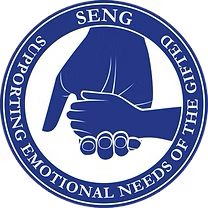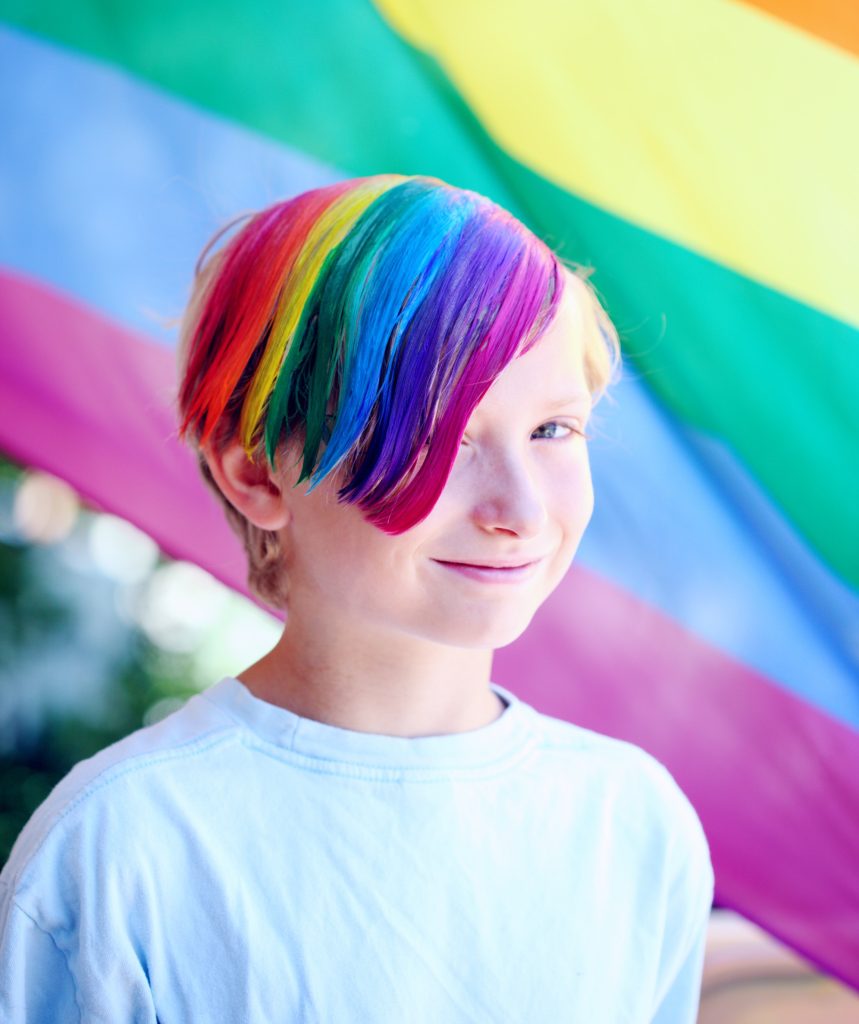In the last few years, the intersection of neurodivergence and queerness has begun to garner more attention. Our neurodivergent children and adolescents are more likely to identify as LGBTQIA+ or queer, and the queer community has a higher rate of neurodivergence. There are so many reasons why this intersection occurs; from feeling “different” from a young age to superior divergent thinking skills, and beyond. So what does this knowledge do for us?
In working with neurodivergent queer kids and their families in therapy, the overwhelming complaint is that these kids feel misunderstood. As the adults in their lives, it can be challenging to sympathize with the unique experience of neurodivergent queer kids today, given that we grew up in a different world with far less awareness and language around these topics.
What’s incredible about the neurodivergent and queer communities is that they now have the words to tell us what they need, how we can serve them, and how we can make them feel seen.
Here are the most common frustrations I hear from clients, and how we can build stronger bonds between neurodivergent queer kids and the adults in their lives.
1. Other kids don’t find it strange. It’s adults who are uncomfortable.
Children and adolescents today are far more familiar and comfortable with queerness and neurodivergence. The main reason for this is exposure; they’ve lived in a world where queerness and neurodiversity existed in the forefront of their culture. The younger children learn about something, the less judgmental they tend to be, and they therefore do not create a bias. Children who have access to the internet, even in areas where queerness and neurodivergence are not accepted, can often find pockets of peers who accept and validate them.
But most adults did not grow up with the visible queer and neurodivergent role models that today’s children have. They didn’t learn the language around sexuality, gender, disability, and cognitive differences until recently and needed to make a concerted effort to shift their language.
If a child discusses queerness or neurodivergence with you and you find yourself feeling uncomfortable and frustrated when hearing words or identities you’ve never heard of, take a pause and try to learn. One of the biggest mistakes that adults make is to assume that other children must be as uncomfortable about these topics as they are.
Unfortunately, many kids feel more validated by their peers than by their parents, teachers, and other trusted adults. We can change that by pausing, listening with curiosity, and learning to things we’ve never heard of or don’t understand.
2. Queerness is not a “phase.”
One of the most common fears I hear from parents is that their child may be going through a “phase.” They worry that by validating their child’s identity now, they are preventing the phase from coming to a natural end. Conversely, one of the most common complaints I hear from kids is that their parents invalidate them when they refer to their identity as simply a “phase.” This word makes them feel belittled and discounted.
Using the word “phase” invalidates the journey that a queer child may be on. Many queer kids question their identity, feel fluid, and have to try different labels before they find the one that feels right. Some people’s labels change multiple times over the course of their lives, and that’s okay.
By validating that you accept your child as they identify today, you show them that you love them, unconditionally, in any iteration. You show them that they can trust you enough to let you in on their journey. Exploring and questioning your identity is a foundational part of growing up, for queer and for cisgender (those who identify with their sex assigned at birth) heterosexual people. The possibility that your child’s identity may change does not need to impact the way you validate them today.
3. Gender dysphoria is not body dysmorphia.
While gender dysphoria and body dysmorphia both involve clinically significant distress related to the body, they are not the same. Many of the parents I work with worry that their children are mistaking body dysmorphia for transness, and that if they accept their child as trans they aren’t treating the “real problem.”
The differences between gender dysphoria and body dysmorphia are fairly easy to assess. People with body dysmorphia see something different in the mirror than other people see and have negative thoughts about their bodies. People with gender dysphoria have the innate sense that their bodies do not match who they are.
While the resulting feeling of both may be hatred of one’s body, the content of the thoughts is different, as is the root cause and the potential solutions. Socially transitioning and getting gender affirming medical care will not improve symptoms of body dysmorphia, just like CBT focused on body dysmorphic thoughts will not improve gender dysphoria.
4. You’re not losing the child you once had; you’re being given a more authentic version of the child that was always there.
When children come out as queer or get a neurodivergent diagnosis, parents often describe the feeling of “grief.” When children hear their parents grieving but feel very much alive, they feel hurt and invalidated.
The truth often lies in the middle. Parents are grieving, but they are not grieving the loss of their child. More often, they grieve the loss of the vision they had for their children’s lives. They may have envisioned girl scouting with their child and need to grieve that vision when they learn they have (and have always had) a son. They may have envisioned reading side by side with their child and grieve the ease in that image when their child is diagnosed with dyslexia. [AS8]
But the child is still there, and they may even feel relieved or seen, glad to finally have a word to describe themselves[AS9]. While labeling can feel daunting for adults, children often thrive finding community and understanding through labels.
It can be confusing for a child to feel relief from something that causes their parents deep sadness.
Parents should [AS10] seek their own support in these moments and not rely on their child. If they describe their emotions in front of their child, it is important that they acknowledge their child is here, has always been here, and will continue to be here. What they grieve is not the child, but the preconception they had of their life.
5. They want you to be happy for them.
Ultimately, beginning to understand your sexuality, gender, and brain can be joyous for kids, full of relief and belonging. The thing that brings pain is the lack of acceptance and validation.
Try to celebrate with the queer neurodivergent kids in your life and find joy in how they newly understand themselves. It may be exciting for them to join new communities and have new language to help others understand them and advocate for their needs.
The best thing you can do is share in their joy and validate that being queer and neurodivergent is a cool thing. It may come with extra challenges, but it is not a tragedy.

